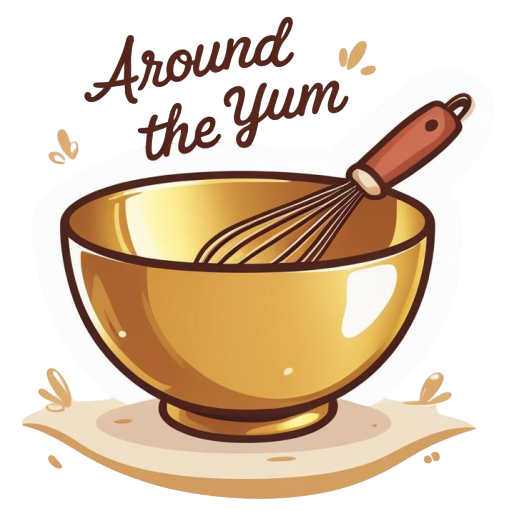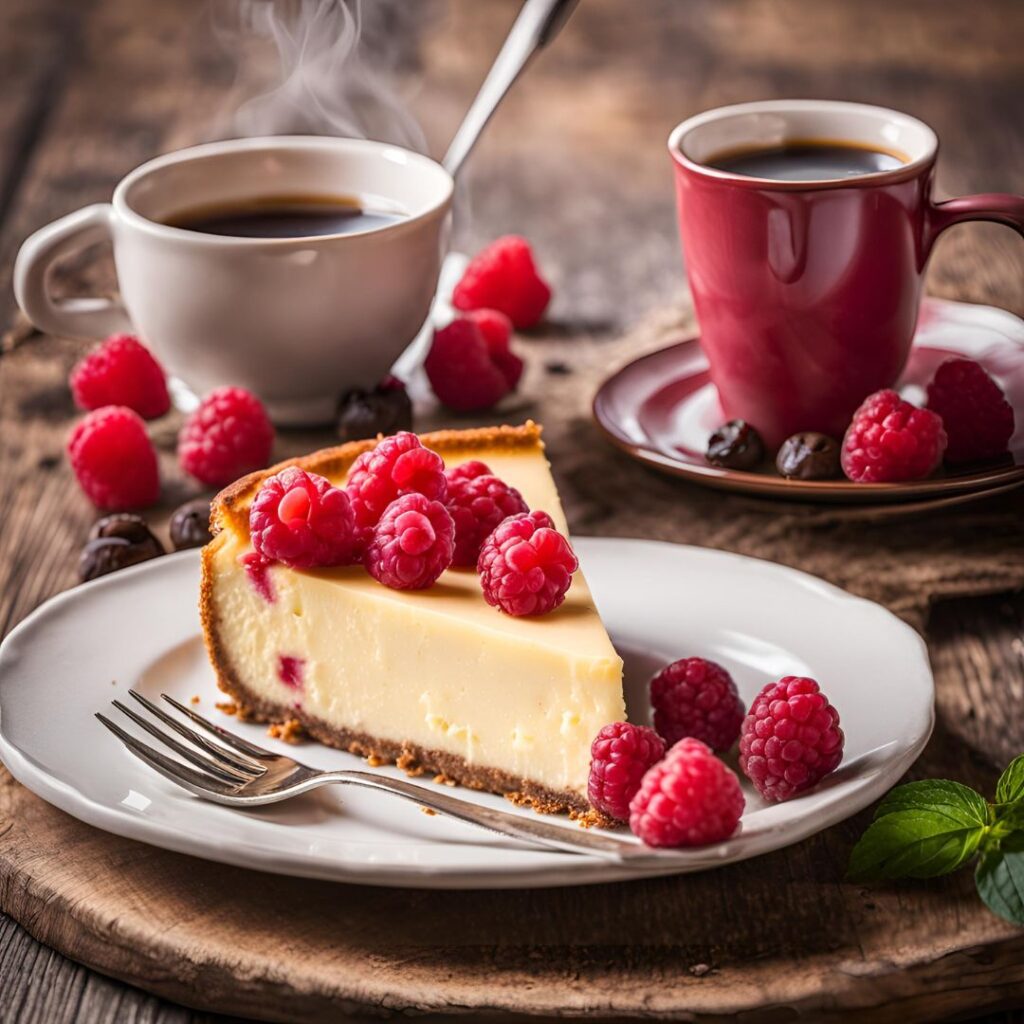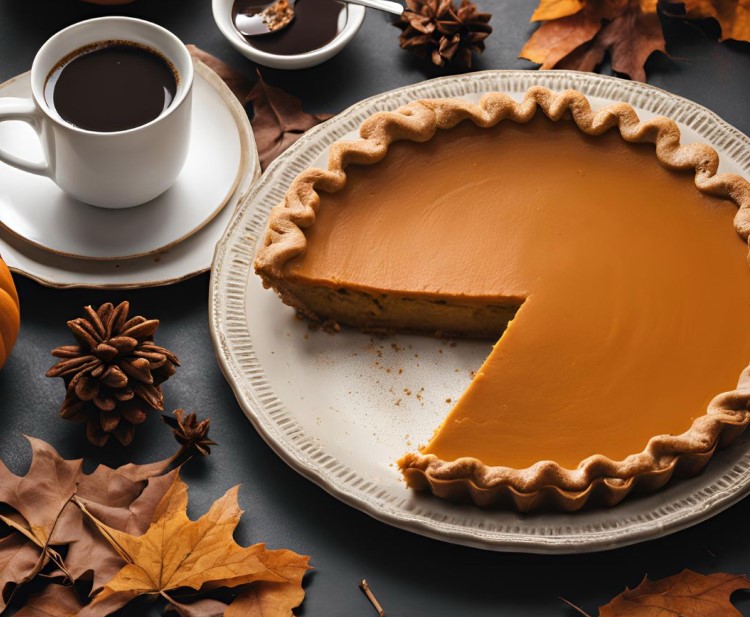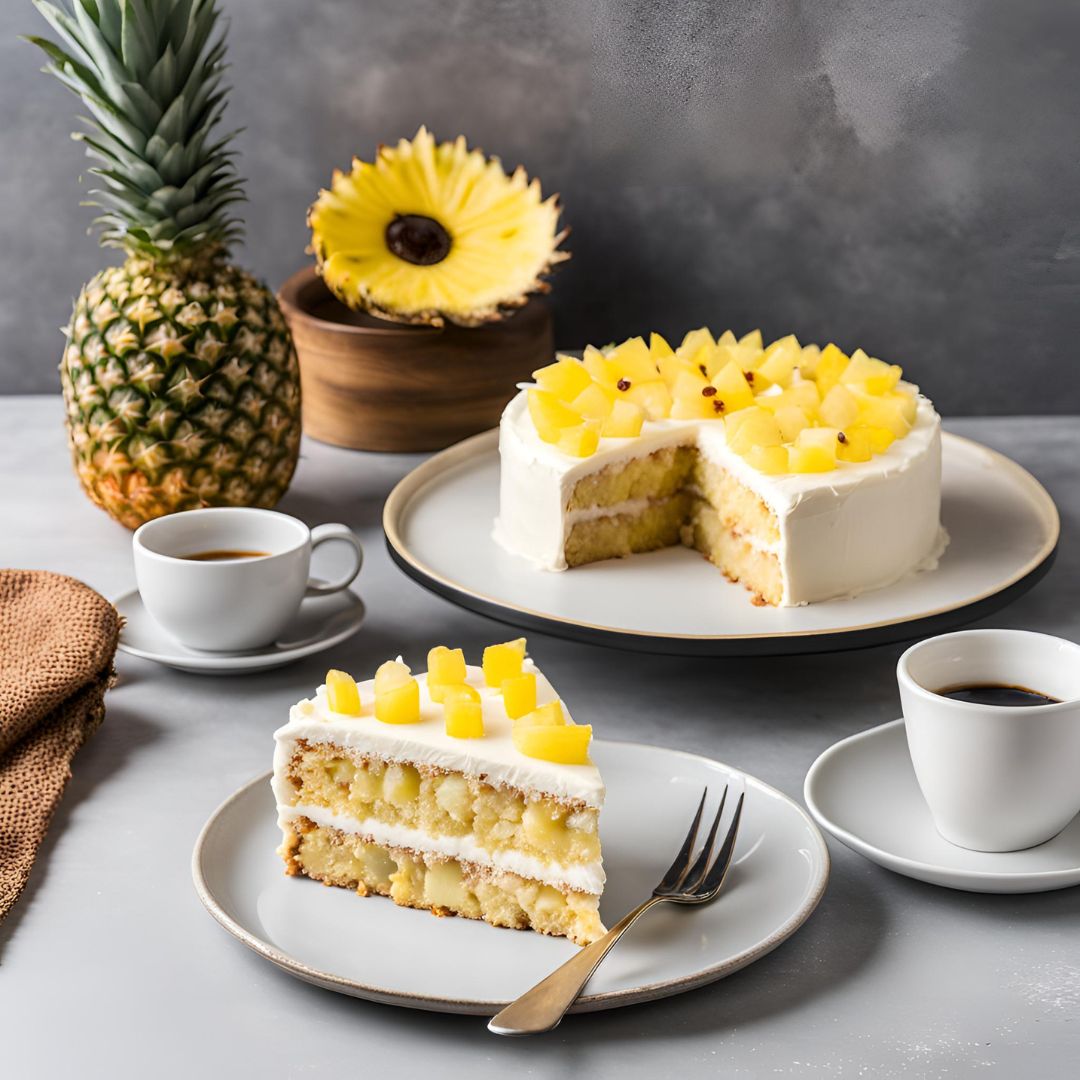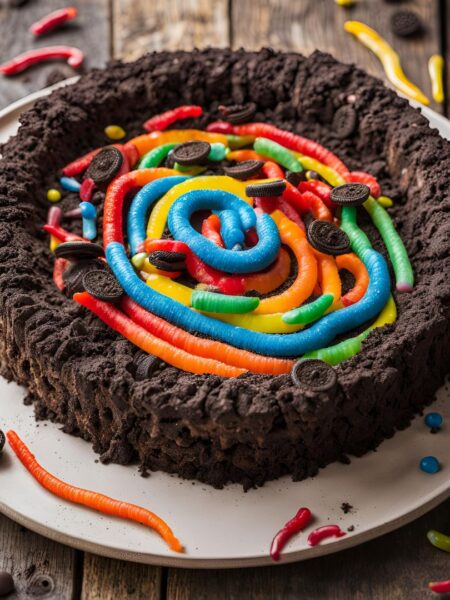Introduction to the Classic Cheesecake Recipe. Cheesecake is a dessert that is universally beloved, with its creamy texture, indulgent richness, and smooth finish making it a treat that transcends borders and cultures. Whether served plain or with an assortment of toppings, cheesecake is a decadent option that is equally at home at a family gathering, a holiday dinner, or a fancy celebration. The classic cheesecake recipe has endured through the ages, offering a timeless dessert that requires a relatively simple process to achieve bakery-quality results in your own kitchen.
In the vast world of desserts, cheesecake stands out for its versatility. Though the base recipe consists of a few core ingredients—cream cheese, sugar, eggs, and a graham cracker crust—it lends itself beautifully to a wide variety of flavors and creative toppings. From fruit compotes and fresh berries to chocolate drizzles, caramel swirls, and even savory additions like nuts or spice infusions, cheesecake offers endless possibilities to suit any taste or occasion.
This article serves as an introduction to making a classic cheesecake at home, demystifying the process and breaking down the steps in a clear, approachable way. Whether you’re a seasoned baker or someone trying their hand at dessert-making for the first time, this recipe is designed to help you create a luscious cheesecake that is both delicious and visually stunning. Before diving into the recipe itself, let’s explore the history, essential techniques, and elements that make a classic cheesecake so remarkable.
A Brief History of Cheesecake
Cheesecake has a surprisingly long and storied history, with origins dating back thousands of years. The earliest form of cheesecake is believed to have been made by the ancient Greeks, who offered the dessert to athletes during the first Olympic Games in 776 B.C. As a testament to its rich heritage, cheesecake has evolved significantly over time and across various regions.
In ancient Greece, cheesecake was made using simple ingredients such as honey, wheat, and cheese, giving rise to an early version that closely resembled a baked custard. When the Romans conquered Greece, they adopted and adapted this recipe, spreading it across their empire. As trade routes expanded and new culinary techniques emerged, cheesecake spread to different parts of the world, evolving into distinct variations.
The version of cheesecake we know and love today, characterized by a rich cream cheese filling and a graham cracker crust, was popularized in the United States in the early 20th century. Cream cheese, a key ingredient in modern cheesecake, was developed in 1872 by an American dairyman named William Lawrence. It wasn’t long before bakers began experimenting with this creamy, tangy ingredient to create the smooth, velvety cheesecakes that are now iconic.
New York-style cheesecake is perhaps the most famous variation, made with a dense, creamy texture and a no-frills approach. This variation usually leaves out any additional flavors, allowing the purity of the cream cheese to shine. Other styles, such as Chicago-style and Italian cheesecake, incorporate ricotta or mascarpone cheeses and feature different textures and flavors, making cheesecake a global dessert with regional distinctions.
The Perfect Balance of Ingredients
At the heart of every classic cheesecake lies a carefully balanced combination of ingredients that contribute to its signature texture and flavor. Understanding the role of each component is crucial to mastering the cheesecake-making process.
Cream Cheese: The star of the show, cream cheese is what gives the cheesecake its smooth, rich consistency. To achieve the best results, it’s essential to use full-fat cream cheese at room temperature. This allows it to mix seamlessly with the other ingredients, creating a lump-free, velvety batter.
Sugar: Sugar sweetens the cheesecake and also helps create a tender, creamy texture by interacting with the proteins in the cream cheese and eggs. Granulated sugar is most commonly used, but variations like brown sugar or even a touch of powdered sugar can add complexity to the flavor profile.
Eggs: Eggs play a crucial role in binding the ingredients together and providing structure to the cheesecake. The key to a perfect cheesecake is to incorporate the eggs without overbeating, as overmixing can trap air in the batter, leading to cracks in the surface during baking. The eggs should be added one at a time and mixed gently to ensure a smooth, cohesive batter.
Sour Cream: While some cheesecake recipes call for heavy cream, the classic version often includes sour cream, which adds a subtle tanginess and a creamy texture. Sour cream also helps balance the richness of the cream cheese, preventing the dessert from becoming overwhelmingly heavy.
Vanilla Extract: Vanilla extract adds warmth and depth of flavor to the cheesecake, enhancing its overall taste. For an extra burst of flavor, some recipes also call for lemon juice or zest, which adds a refreshing citrus note that cuts through the richness.
Graham Cracker Crust: The buttery graham cracker crust is a hallmark of classic cheesecake, providing a sweet, crunchy contrast to the creamy filling. Crushed graham crackers are mixed with sugar and melted butter, then pressed firmly into the bottom of a springform pan to create a solid base. Baking the crust for a few minutes before adding the filling ensures that it remains crisp and firm.
Key Techniques for the Perfect Cheesecake Recipe
Cheesecake is a dessert that requires patience and attention to detail, but with a few key techniques, you can achieve flawless results every time.
1. Room Temperature Ingredients: One of the most important tips for making cheesecake is to use room temperature ingredients, especially the cream cheese, eggs, and sour cream. Cold ingredients can cause the batter to become lumpy and difficult to mix, which can affect the final texture.
2. Avoid Overmixing: When preparing the cheesecake batter, it’s crucial not to overmix the ingredients. Overmixing introduces air into the batter, which can cause the cheesecake to rise too much and crack during baking. Mix the ingredients just until smooth and combined for the best results.
3. Water Bath: A water bath, also known as a bain-marie, is a technique used to ensure gentle, even baking. By placing the cheesecake pan in a larger pan filled with water, you can maintain a moist environment in the oven. This prevents the cheesecake from drying out and helps prevent cracking on the surface.
4. Cooling Gradually: After baking, it’s essential to cool the cheesecake gradually to prevent it from collapsing or cracking. Let the cheesecake cool in the oven with the door slightly ajar for about an hour before transferring it to the refrigerator. This gradual cooling process allows the cheesecake to set properly without any sudden temperature changes.
5. Chilling Time: While it can be tempting to dig into the cheesecake right away, letting it chill in the refrigerator for at least 4-6 hours (or overnight) is crucial for achieving the perfect texture. The cheesecake will firm up as it chills, allowing the flavors to meld and the texture to become creamy and smooth.
Conclusion
Classic cheesecake is a dessert that brings together rich flavors, smooth textures, and a perfect balance of sweetness and tanginess. Whether you’re baking it for a special occasion or simply to satisfy your sweet tooth, following these simple tips and techniques will help you create a show-stopping cheesecake that rivals any bakery version. From the buttery graham cracker crust to the creamy, luscious filling, each bite of homemade cheesecake is a testament to the beauty of classic desserts done right.
This creamy, rich, and indulgent cheesecake is perfect for any occasion. Below is a simple and easy recipe to make a classic cheesecake at home.
Ingredients: Classic Cheesecake Recipe
For the crust:
- 1 ½ cups graham cracker crumbs (about 10 graham crackers)
- ⅓ cup sugar
- 6 tablespoons unsalted butter, melted
For the cheesecake filling:
- 32 oz (4 blocks) cream cheese, softened
- 1 cup granulated sugar
- 1 cup sour cream, room temperature
- 1 teaspoon vanilla extract
- 4 large eggs, room temperature
- 2 tablespoons all-purpose flour
- 1 tablespoon lemon juice (optional, for a slight tang)
For topping (optional):
- Fresh berries, whipped cream, or fruit compote
Making Instructions : Cheesecake Recipe
1. Prepare the crust:
- Preheat your oven to 325°F (163°C).
- In a medium bowl, combine the graham cracker crumbs, sugar, and melted butter. Mix until the crumbs are well-coated.
- Press the mixture into the bottom of a 9-inch springform pan, ensuring an even layer.
- Bake the crust for 10 minutes. Remove and allow it to cool while preparing the filling.
2. Prepare the cheesecake filling:
- In a large mixing bowl, beat the softened cream cheese until smooth and creamy, about 2-3 minutes.
- Gradually add the sugar and continue to beat until fully combined and fluffy.
- Add the sour cream and vanilla extract, mixing until smooth.
- Beat in the eggs, one at a time, ensuring each is fully incorporated before adding the next.
- Finally, add the flour and lemon juice (if using), mixing just until smooth. Do not overmix as it can cause cracks in the cheesecake.
3. Bake the cheesecake:
- Pour the filling over the cooled crust, spreading it evenly.
- Place the springform pan on a large piece of foil and wrap the bottom securely. Set the pan in a larger roasting pan and fill it with about 1 inch of hot water to create a water bath.
- Carefully transfer the cheesecake to the oven and bake for 1 hour to 1 hour and 10 minutes. The cheesecake is done when the center is slightly jiggly but the edges are set.
- Turn off the oven, crack the oven door slightly, and let the cheesecake cool in the oven for 1 hour to prevent cracks.
- After an hour, remove the cheesecake from the oven, discard the water bath, and refrigerate for at least 4-6 hours or overnight.
4. Serve:
- Once fully chilled, remove the cheesecake from the springform pan and serve with your desired toppings such as fresh berries, whipped cream, or a drizzle of fruit compote.
Total Time Breakdown: Cheesecake Recipe
- Prep Time: 20 minutes
- Crust Baking Time: 10 minutes
- Cheesecake Baking Time: 1 hour – 1 hour 10 minutes
- Cooling in Oven: 1 hour
- Chilling Time (in fridge): 4-6 hours (or overnight)
Total Time: 6 hours 30 minutes – 8 hours (including chilling time)
Servings: This recipe makes 12-14 servings depending on portion size.
Some More Interesting Recipes –
- Blueberry Cheesecake Recipe
- Strawberry Cheesecake Recipe
- Mango Cheesecake Recipe
- Chocolate Cheesecake Recipe
- Lemon Cheesecake Recipe
- Basque Cheesecake Recipe
- Apple Cake Recipe
- Carrot Cake Recipe
- Pineapple Cake Recipe
- Chocolate Brownies Recipe
- Chocolate Cake Recipe
- Strawberry Cake Recipe
FAQs for Cheesecake Recipe
What type of cream cheese should I use for this cheesecake recipe?
Always use full-fat cream cheese for the best texture and flavor. Low-fat or reduced-fat varieties will affect the richness and consistency of the cheesecake. Make sure the cream cheese is at room temperature before mixing to avoid lumps in the batter.
Why did my cheesecake crack?
Cheesecakes can crack for several reasons. Overmixing the batter can incorporate too much air, causing the cake to rise and crack as it cools. Baking at too high a temperature or for too long can also cause cracks. Using a water bath (bain-marie) and cooling the cheesecake slowly in the oven with the door slightly open can help prevent cracking.
What is a water bath, and is it necessary?
A water bath involves placing the springform pan with the cheesecake inside a larger pan filled with hot water. This creates a moist environment, helping the cheesecake bake evenly and preventing it from drying out or cracking. While not strictly necessary, it greatly improves the texture and appearance of your cheesecake.
Can I make this recipe of cheesecake without a water bath?
Yes, you can bake cheesecake without a water bath, but you risk a drier texture and potential cracks. To reduce the chances of cracks, bake the cheesecake at a lower temperature and allow it to cool gradually in the oven after turning it off.
How do I know when my cheesecake is done baking?
The cheesecake is done when the edges are set, but the center still has a slight jiggle. Overbaking can result in a dry texture and cracks. You can check by gently shaking the pan; if the center wobbles slightly but doesn’t appear liquid, it’s ready.
Why is it important to cool the cheesecake slowly?
Gradual cooling helps prevent sudden temperature changes, which can cause the cheesecake to crack. After turning off the oven, leave the cheesecake inside with the door slightly ajar for about an hour. This slow transition allows the cake to set without stress.
How long should I chill the cheesecake before serving with this recipe?
Cheesecake should chill in the refrigerator for at least 4-6 hours, but overnight is ideal. This allows the cheesecake to firm up, enhancing both the flavor and texture. It also makes slicing easier.
Can I freeze cheesecake made with this Cheesecake Recipe?
Yes! Cheesecake freezes exceptionally well. To freeze, wrap the cooled cheesecake tightly in plastic wrap and then in aluminum foil or place it in an airtight container. It can be frozen for up to 2-3 months. Thaw in the refrigerator overnight before serving.
Why does my cheesecake have lumps in it?
Lumps in the cheesecake batter are usually caused by cold cream cheese. Always ensure your cream cheese (and other ingredients) is at room temperature before mixing. If lumps form, continue mixing until smooth or use a hand mixer to break them up.
Can I use a different crust instead of graham crackers with this Cheesecake Recipe?
Absolutely! While the graham cracker crust is traditional, you can use other options like crushed digestive biscuits, Oreo cookies, gingersnaps, or even a nut-based crust. Simply substitute the graham cracker crumbs with an equal amount of your preferred alternative.
How do I prevent the crust from getting soggy in this recipe of Cheesecake?
Baking the crust for 10 minutes before adding the cheesecake filling helps to set it and keeps it crisp. If you’re using a water bath, wrap the springform pan tightly in aluminum foil to prevent water from leaking in and making the crust soggy.
Can I add flavors or toppings with this recipe of cheesecake?
Yes! Cheesecake recipe is highly versatile. You can mix in flavors like chocolate, citrus, or pumpkin into the filling. Toppings like fresh berries, fruit compote, whipped cream, chocolate ganache, or caramel drizzle add extra flair to a classic cheesecake. Just make sure the cheesecake is fully chilled before adding any toppings.
Cheesecake Recipe
Classic cheesecake is a dessert that brings together rich flavors, smooth textures, and a perfect balance of sweetness and tanginess. Whether you're baking it for a special occasion or simply to satisfy your sweet tooth, following these simple tips and techniques will help you create a show-stopping cheesecake that rivals any bakery version. From the buttery graham cracker crust to the creamy, luscious filling, each bite of homemade cheesecake is a testament to the beauty of classic desserts done right.
Ingredients: Classic Cheesecake Recipe
For the crust:
For the cheesecake filling:
For topping (optional):
Making Instructions : Cheesecake Recipe
1. Prepare the crust:
- Preheat your oven to 325°F (163°C).
- In a medium bowl, combine the graham cracker crumbs, sugar, and melted butter. Mix until the crumbs are well-coated.
- Press the mixture into the bottom of a 9-inch springform pan, ensuring an even layer.
- Bake the crust for 10 minutes. Remove and allow it to cool while preparing the filling.
2. Prepare the cheesecake filling:
- In a large mixing bowl, beat the softened cream cheese until smooth and creamy, about 2-3 minutes.
- Gradually add the sugar and continue to beat until fully combined and fluffy.
- Add the sour cream and vanilla extract, mixing until smooth.
- Beat in the eggs, one at a time, ensuring each is fully incorporated before adding the next.
- Finally, add the flour and lemon juice (if using), mixing just until smooth. Do not overmix as it can cause cracks in the cheesecake.
3. Bake the cheesecake:
- Pour the filling over the cooled crust, spreading it evenly.
- Place the springform pan on a large piece of foil and wrap the bottom securely. Set the pan in a larger roasting pan and fill it with about 1 inch of hot water to create a water bath.
- Carefully transfer the cheesecake to the oven and bake for 1 hour to 1 hour and 10 minutes. The cheesecake is done when the center is slightly jiggly but the edges are set.
- Turn off the oven, crack the oven door slightly, and let the cheesecake cool in the oven for 1 hour to prevent cracks.
- After an hour, remove the cheesecake from the oven, discard the water bath, and refrigerate for at least 4-6 hours or overnight.
4. Serve:
- Once fully chilled, remove the cheesecake from the springform pan and serve with your desired toppings such as fresh berries, whipped cream, or a drizzle of fruit compote.
